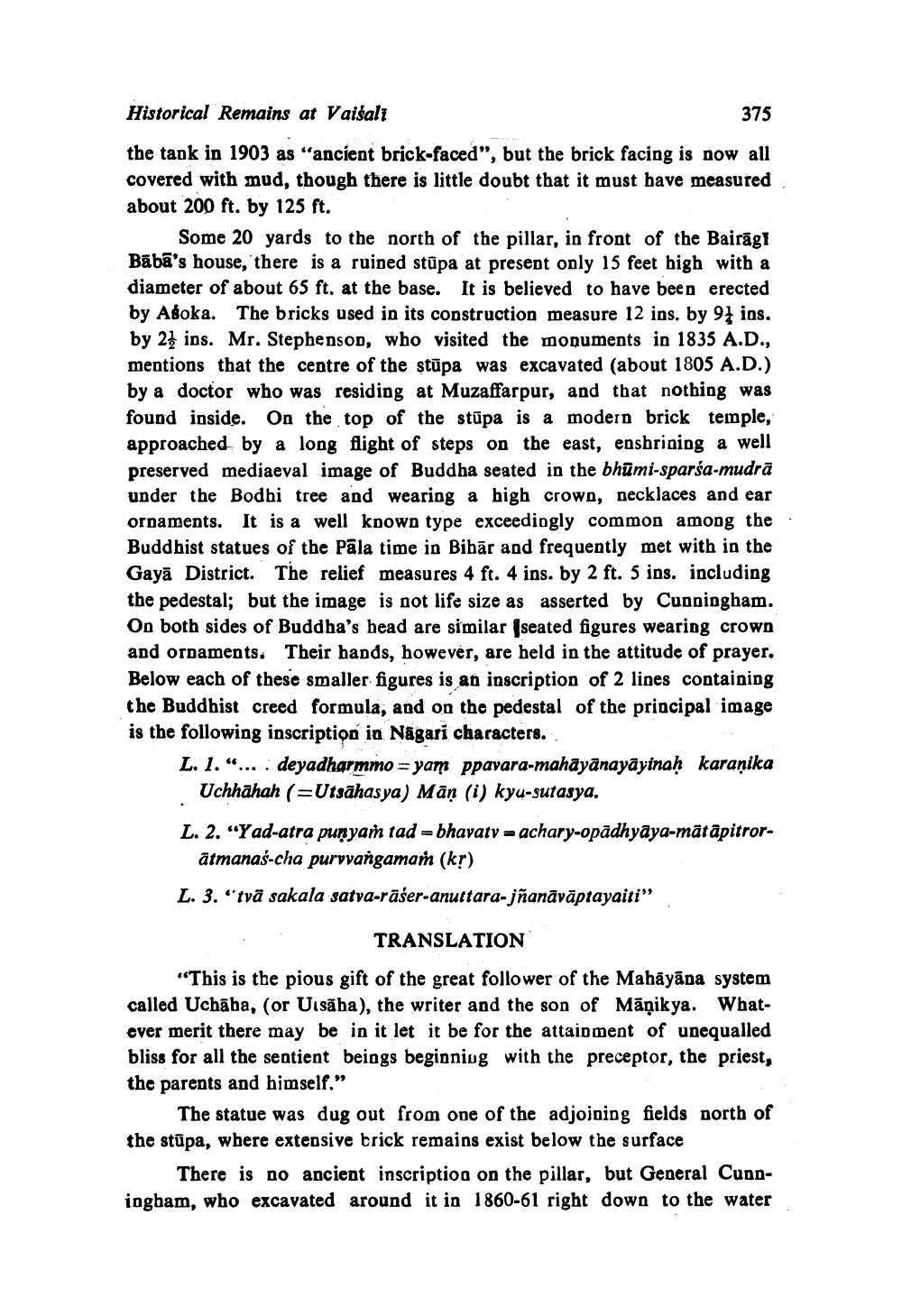________________ Historical Remains at Vaisali 375 the tank in 1903 as "ancient brick-faced", but the brick facing is now all covered with mud, though there is little doubt that it must have measured about 200 ft. by 125 ft. Some 20 yards to the north of the pillar, in front of the Bairagi Baba's house, there is a ruined stupa at present only 15 feet high with a diameter of about 65 ft. at the base. It is believed to have been erected by Asoka. The bricks used in its construction measure 12 ins. by 97 ins. by 2. ins. Mr. Stephenson, who visited the monuments in 1835 A.D., mentions that the centre of the stupa was excavated (about 1805 A.D.) by a doctor who was residing at Muzaffarpur, and that nothing was found inside. On the top of the stupa is a modern brick temple, approached by a long flight of steps on the east, enshrining a well preserved mediaeval image of Buddha seated in the bhumi-sparsa-mudra under the Bodhi tree and wearing a high crown, necklaces and ear ornaments. It is a well known type exceedingly common among the Buddhist statues of the Pala time in Bibar and frequently met with in the Gaya District. The relief measures 4 ft. 4 ins. by 2 ft. 5 ins. including the pedestal; but the image is not life size as asserted by Cunningham. On both sides of Buddha's head are similar seated figures wearing crown and ornaments. Their hands, however, are held in the attitude of prayer. Below each of these smaller figures is an inscription of 2 lines containing the Buddhist creed formula, and on the pedestal of the principal image is the following inscription in Nagari characters. L. 1."...deyadharmmo =yam ppavara-mahayanayayinah karanika Uchhahah (=Utsahasya) Man (i) kyu-sutasya. L. 2. "Yad-atra punya tad-bhavaty = achary-opadhyaya-matapitroratmanas-cha purvvangamam (kr) L. 3. "tva sakala satva-raser-anuttara- jnanavaptayaiti" TRANSLATION "This is the pious gift of the great follower of the Mahayana system called Uchaba, (or Utsaba), the writer and the son of Manikya. Whatever merit there may be in it let it be for the attainment of unequalled bliss for all the sentient beings beginning with the preceptor, the priest, the parents and himself." The statue was dug out from one of the adjoining fields north of the stupa, where extensive brick remains exist below the surface There is no ancient inscription on the pillar, but General Cuoningham, who excavated around it in 1860-61 right down to the water




